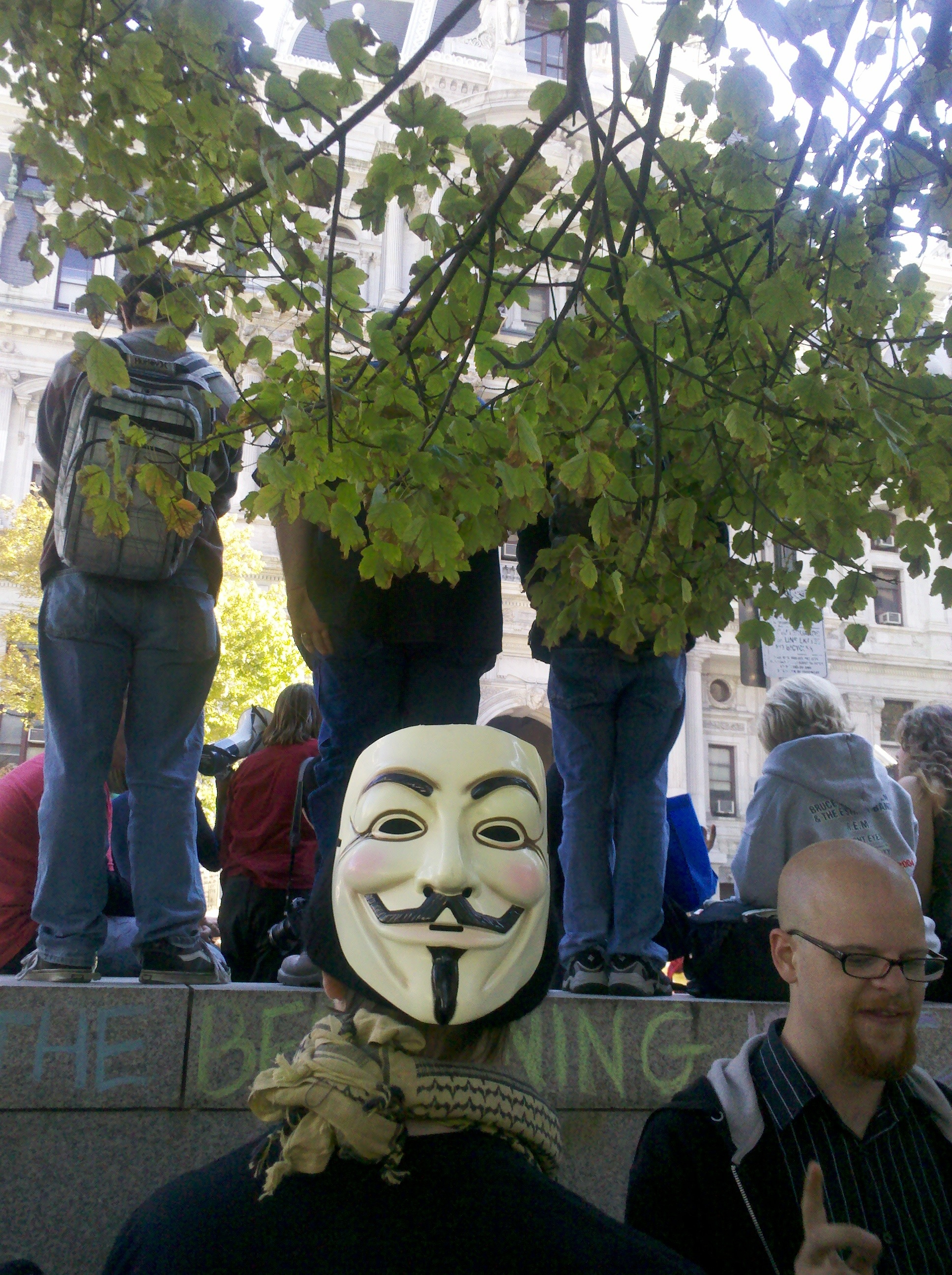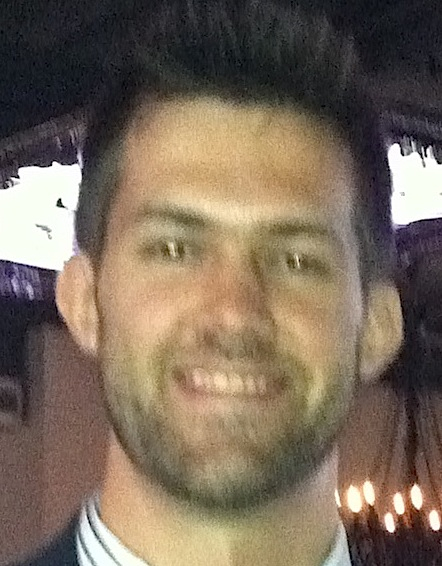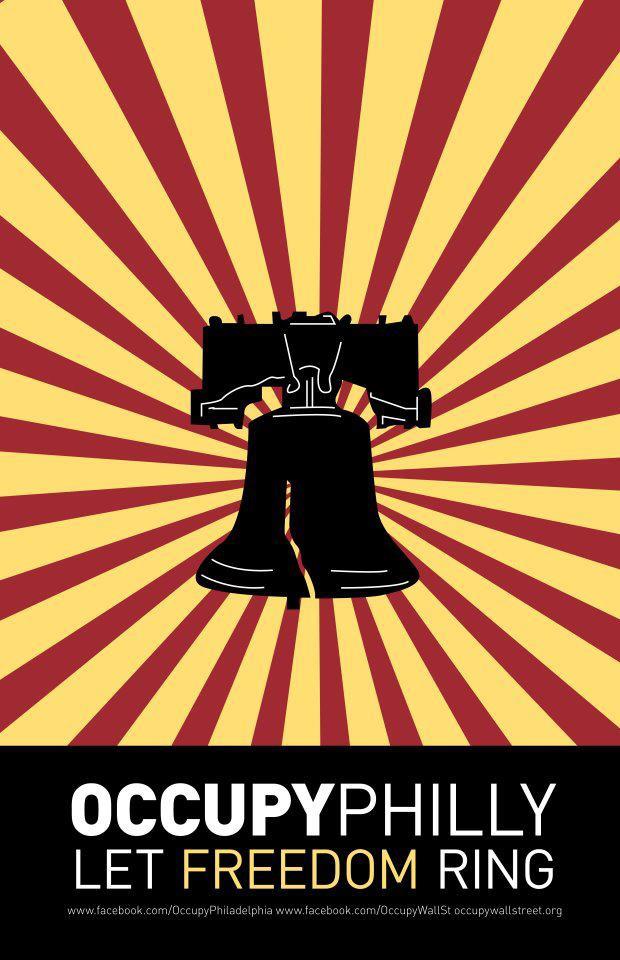
[Photo by MEREDITH KLEIBER]
 BY ALEXANDER POTTER “This is what democracy looks like!” was the collective cry Saturday afternoon as hundreds of people marched from Dilworth Plaza at City Hall to Independence Hall and back. Mayor Michael Nutter had met with many Occupiers the day before to express support, remind everyone to remain peaceful and, let’s face it, score political points. Although they were extremely loud and disruptive, drawing shop clerks out of their stores and onto Market Street, picking up stragglers and passersby on the sidewalks as they went along, they obeyed Nutter’s only wish and made their point with their presence and with their voices. After all, who needs violence and destruction when the facts are on your side?
BY ALEXANDER POTTER “This is what democracy looks like!” was the collective cry Saturday afternoon as hundreds of people marched from Dilworth Plaza at City Hall to Independence Hall and back. Mayor Michael Nutter had met with many Occupiers the day before to express support, remind everyone to remain peaceful and, let’s face it, score political points. Although they were extremely loud and disruptive, drawing shop clerks out of their stores and onto Market Street, picking up stragglers and passersby on the sidewalks as they went along, they obeyed Nutter’s only wish and made their point with their presence and with their voices. After all, who needs violence and destruction when the facts are on your side?
On the lawn before Independence Hall, where the Founding Fathers signed the Declaration of Independence 235 years ago, some 1,000 protesters gathered to vent their frustrations — namely that no Big Banking executives have been held accountable for their reckless actions that have triggered the worst economic bed-shitting since the Great Depression. Just about every race, color, sex, age and creed was represented. Parents even hoisted  their children onto their shoulders as they marched. “We are the 99%!” almost everyone shouted in unison to anyone and everyone that would listen. “So are you!” they added, implying that those on the sidelines taking pictures should wake up and smell the coffee before it’s too late.
their children onto their shoulders as they marched. “We are the 99%!” almost everyone shouted in unison to anyone and everyone that would listen. “So are you!” they added, implying that those on the sidelines taking pictures should wake up and smell the coffee before it’s too late.
While the peaceable army of #OccupyPhilly was pounding the pavement, many stayed behind to hold down the fort—which is looking more and more like an actual fort as the days go by with tents, cardboard huts, and scattered sleeping bags lining the center of the plaza on the west side of City Hall. A drum circle slowly takes shape around a sofa somebody brought to the plaza. A kitchen crew is hard at work at all hours supplying food for the masses along Market Street. Some fringe groups who are riding the coattails of the Occupy movement, such as the Hare Krishnas, have their own stations on the outskirts of the encampment. A thousand conversations are taking place at once between all kinds of people, but they are all saying the same thing: This is class warfare, and we’re losing.
Next to a tent a young protester has turned into a library, three young teachers occupy a corner of the plaza. Hayley, Julie and Leanne all have graduate degrees and are either underemployed or very close to someone who is. Julie, who has degrees from two Ivy League schools, currently works two part-time jobs to support herself. “I want to teach children,” she said. “That seems like something that there should be many opportunities to do, but it’s become increasingly hard to get employment at all and to get a teaching job that pays a living wage and that allows you to be a socially responsible educator.”
Julie shares a political point of view with most of the Occupiers, which is a nonpartisan one. “I have no policy demands,” she says. “My interest is being in a gathering with other members of the working class to kind of reform or reexamine our identity.”
“I want the debate in our country to be moving away from where it seems to be going,” said Leanne. “I don’t want the Tea Party people to have so much control over the [overall political] debate, which they do. The debate is moving over [to the Tea Partiers’ side] and I’m very nervous about that.”
When asked if Occupy had the potential to become a political party to oppose the Tea Party, Leanne said, “It’s beyond parties. It’s beyond even organizing people. It’s about having space for our conversations and to connect with other people because in addition to being dragged down by the economic situation, we’re dragged apart at the same time, and it’s becoming harder and harder to make connections with people.”
Julie currently works with 18- to 21-year-olds who are trying to finish high school and get jobs. “A lot of them,” she said, “don’t necessarily feel like they can take any sort of action to better their situation—other than working toward a diploma—nor do they have the time to do so because they’re working at minimum wage jobs to support children. So, I’m here to try to learn as much as I can and pass on what I see and relay stories that they might have and want to share but that they don’t feel like they have a voice to share and hopefully eventually have a space where they do.”
In addition to the unemployed and underemployed, there are lots of students, rightfully worried about the mess that awaits them after they graduate. Jen, a sophomore psychology major at Drexel who’d been at City Hall since Thursday, the first day of the protest. She said her “mind was blown” by the intelligent conversations she’s had with strangers at the demonstration. “I think that’s what this is all about,” she said. “People see that there’s a problem, they know they can’t solve it by themselves, so they come together. Today there have been triple or quadruple the amount of people there have been the last couple days.”
Jen has not even finished school, and yet already has very grown-up problems. “Now, a college education doesn’t get you a job in the end,” she said. “I’m already $40,000 in debt and I want to get my Ph.D. so I have a long road ahead of me and a lot of money I’m going to have to pay off in the end. It’s all by chance at the end, if I’m able to get a job, and if I’m able to pay it off, that’s great, but it’s looking slim.”
Heinz, a retired carpenter who doesn’t waste time mincing words, believes #OccupyPhilly is beyond the largely irrelevant partisan divides fostered by the corporate media. “There are probably some Tea Partiers here,” said Heinz. “That’s all the better. They should join us, if they hold true to their beliefs. I think we’re all taking a big screwing, and we’re all in it together—we’re the 99%.” There were Tea Partiers present, indeed, and while most participants share the universal agenda that Heinz is talking about, there are some who want to bring the focus to specific areas of concern. John Perez was there representing “Occupy the Hood,” a movement started by a black man in Brooklyn who attended Occupy Wall Street and felt that it was overwhelmingly dominated by white males. The man contacted a friend in Detroit and together they invented the sub-movement, with the intention of shedding light specifically on the economic frustrations of people in poor black neighborhoods across America. John said the group already has 7,000 members nationwide.
